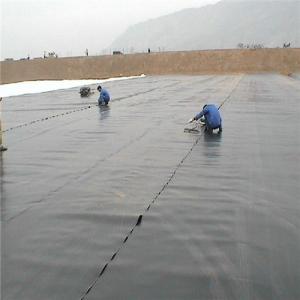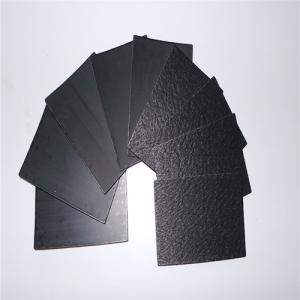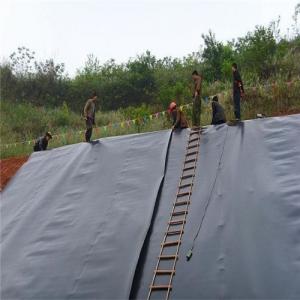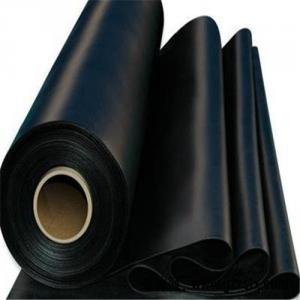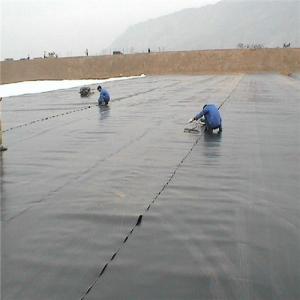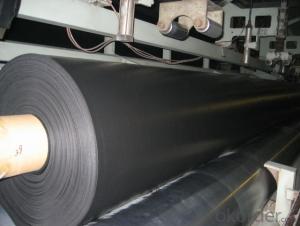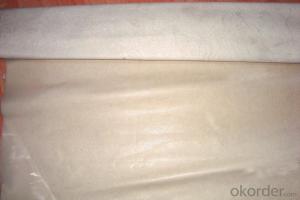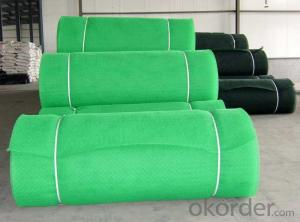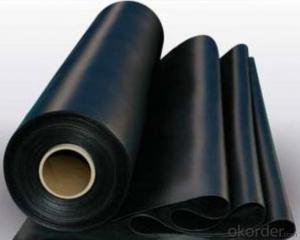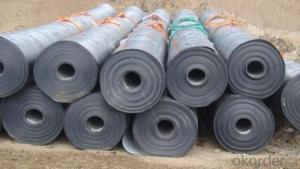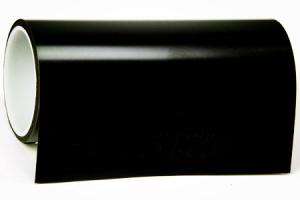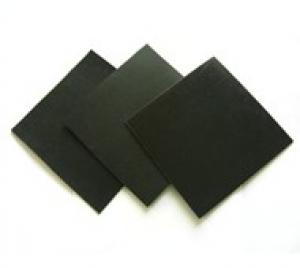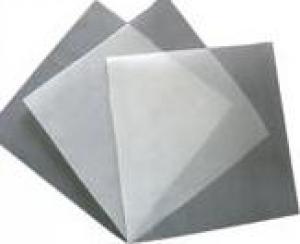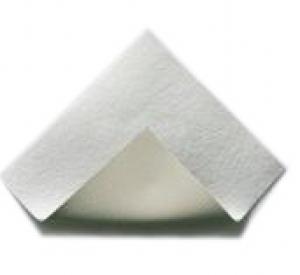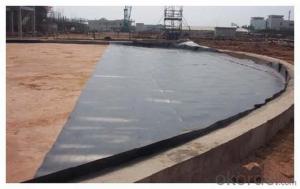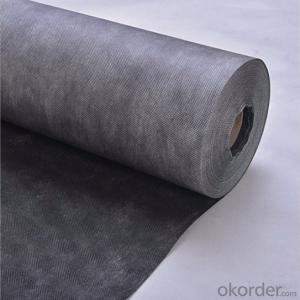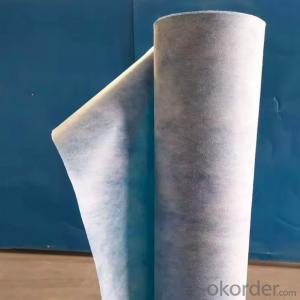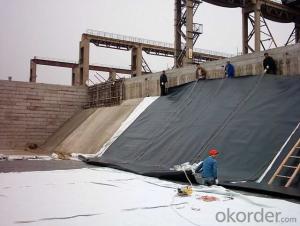Waterproof HDPE Geomembrane with ASTM Standard
- Loading Port:
- China main port
- Payment Terms:
- TT or LC
- Min Order Qty:
- 1000 m²
- Supply Capability:
- 1000000 m²/month
OKorder Service Pledge
OKorder Financial Service
You Might Also Like
Item specifice
HDPE Geomembrane Introduction
HDPE geomembrane are the preferred products for lining projects requiring low permeability , corrosion protection ,
exceptional chemical and ultraviolet resistance properties , which makes them extremely cost effective for many applications such as waste landfill , storage reservoirs ,canals , powr plants in energy , vapor barriers , and waste water treatment in the line of industry and aquaculture and agriculture projects.

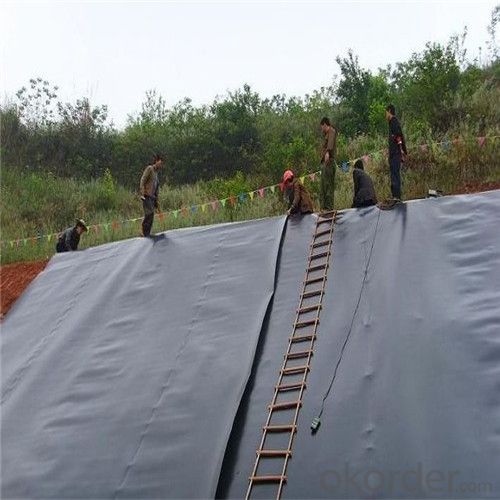
HDPE Geomembrane Specification
Material100% virgin HDPE with UV trested
Thickness: 0.75mm-3.0mm
Width: 2m-12m
Color: grey, as request
Material: HDPE, LDPE, LLDPE
Type: smooth, textured
Packaging & Shipping
Packing: PLASTIC FILM INSIDE, AND WOVEN BAG OUTSIDE
Shipping: About 15 days after receipt the deposit
FAQ:
Q: What kind of payments does jenor support?
A: T/T, L/C, Cash are accepted.
Q: Do you charge for the samples?
A: Accordeing to our company policy, the samples are free, we only charge the freight fee. And we will return the freight fee during the next order.
Q: Can you produce according to customers' design?
A: Sure, we are professional manufacturer, OEM and ODM are both welcome.
- Q:What is the lifespan of a geomembrane in a pond liner application?
- The lifespan of a geomembrane in a pond liner application can vary depending on several factors such as the type of material used, quality of installation, and maintenance practices. However, on average, a well-installed and properly maintained geomembrane can last anywhere between 20 to 30 years or even longer.
- Q:Is good to stick the mobile phone film
- There is nothing either good or bad but thinking makes it so The mobile phone film can be divided into two categories. One is only for sticking on the screen, the protection of the screen is not damaged. Abother is for sticking the whole body. It will not affect the phone's performance and heat dissipation if it is only for sticking on the screen. Such as my XT800, it is pasted the OK8 frosted screen protective film, it did not affect the performance of the phone and screen sensitivity. Sticking the film for the whole body should consider about the film quality and technology. If it is pasted well, it will not affect the performance of the phone, but the phone itself has small heat dissipation that can be basically ignored. If LZ needs to stick the film, it is recommended to buy ok8 protective film and static film, which is a set of films and the cost performance is high. The advantage of static film is that it can be repeated paste and be cleaned
- Q:Can geomembranes be used in sewage and sludge storage facilities?
- Yes, geomembranes are commonly used in sewage and sludge storage facilities. Geomembranes are impermeable liners that provide a reliable and cost-effective solution for containing and preventing the leakage of sewage and sludge. These liners are durable, resistant to chemicals and environmental factors, and can effectively prevent contamination of soil and groundwater.
- Q:Does a mist screen need to stick membrane?
- Mist screen, that is, the surface is rough, so the light shines above and generates diffuse reflection. Wherever we see it, it is not dazzling, and are able to see the light reflected back. Glossy screen is flat and smooth, reflective, brings about specular reflection, so our eyes may just face the specular light, and it will be dazzling. In summary, it can't change, or you can go under the sunshine and try to see whether it is dazzling. 2, It doesn't matter whether you pasted or not, it just obtains another protective film.
- Q:What are the potential drawbacks of using geomembranes?
- Some potential drawbacks of using geomembranes include the high initial installation cost, the need for proper maintenance and inspection to ensure their effectiveness, and the risk of punctures or damage during installation or use. Additionally, geomembranes may not be suitable for certain applications or environments, and their long-term durability and performance can vary depending on factors such as material quality and exposure to UV radiation.
- Q:What is the difference between the membrane of LGP and BEF?
- As their names suggest, they can be divided according to usage. 1) LGP membrane can guide light. 2) Reflective membrane can reflect the light. 3) The BEF membrane can enhance the light. They can also be divided according to visual feature. 1) The LGP is made of plastic. It's translucent and easy to break. 2) Reflective membrane is mainly made of PET. It's completely opaque, elastic but easy to be cut into pieces with tools like scissors. 3) BEF membrane is mainly made of PET too. It's translucent. The color of the light reflected by it varies depending on the angle.
- Q:Can geomembranes be used in floating covers for liquid containment?
- Yes, geomembranes can indeed be used in floating covers for liquid containment. Geomembranes, which are impermeable synthetic liners, are commonly used in various environmental applications, including floating covers for liquid containment. These covers are designed to prevent evaporation, contamination, and the release of gases from liquid storage systems such as ponds, lagoons, or tanks. The floating cover, made of a geomembrane material, floats on the liquid surface and provides a secure barrier, ensuring the containment and protection of the liquid.
- Q:What are the considerations for geomembrane welding techniques?
- Some considerations for geomembrane welding techniques include the type and thickness of the geomembrane material, the welding method to be used (e.g., hot wedge, extrusion, or hot air), the environmental conditions (e.g., temperature, wind speed), the required weld strength and durability, and the skill and experience of the welder. Additionally, factors such as the presence of contaminants or uneven surfaces may also need to be taken into account.
- Q:What are the safety considerations for working with geomembranes?
- When working with geomembranes, several safety considerations need to be taken into account. One primary concern is the potential for physical hazards, such as trips and falls, as installation and repair work often take place on uneven terrain. It is crucial to wear appropriate personal protective equipment (PPE) like safety boots and helmets to minimize the risk of injury. Another important safety consideration is the use of heavy machinery and equipment during installation. Operators should be trained and competent in handling these machines, and regular maintenance checks should be conducted to ensure their safe operation. Additionally, working with geomembranes may involve the use of hazardous chemicals, such as adhesives or solvents. It is essential to follow proper handling and storage procedures to prevent exposure and minimize health risks. Adequate ventilation and the use of respiratory protection may be necessary in certain situations. Finally, as geomembranes are often used in environmental protection projects, it is crucial to consider the potential impact on surrounding ecosystems. Proper waste management and disposal practices should be implemented to prevent pollution and minimize environmental harm. Overall, prioritizing safety through proper training, PPE usage, equipment maintenance, handling of chemicals, and environmental awareness is key when working with geomembranes.
- Q:How does the construction of the soft film ceiling?
- 1. First to go to the site to see if there is a condition of installing the keel: Look at the scene to make sure the wall is completed, and woodworking processing part is qualified, the area that need to be plastered should be completed first. First part plastering carpentry part we proposed must be in accordance with the requirements to do, to advance the processing of.2. entering the construction site conditions Licensor hole size lamp, air outlet, first part is fixed according to the design Aluminum Alloy keel keel carpentry requirements drawing well, attention must be right angle connecting to smooth, flat, dense.3. lamp holder, tuyere, light tube plate to and around the keel level, and firmly cannot swing can smooth.4. smoke, ceiling lamps, the first position to make a wooden frame, wooden frame the bottom surface should be polished, and pay attention to the level of height is too low, it is easy to show a trace of.5. before installing ceiling, carefully check the keel joints are solid and smooth, the spray head to stick on the white tape, an outlet should be well handled. When loading the smallpox to first from the middle to both sides of the fixed, while paying attention to size on both sides and pay attention to welding seam to the final straight angle position, pay attention to smooth. Around the well to the smallpox pruning removes. To perfect income effect on the edge. Turn on the light hole. To mark the position of the lamp hole , and carefully stick the PVC lamp ring carefully and accurately on the bottom of the soft film and then remove the excessive smallpox after it is firm. Find the position of the outlet and the light pipe handicap, just as the surroundings, to install the soft film to the aluminum alloy keel, pay attention to keep the angle be smooth.
1. Manufacturer Overview |
|
|---|---|
| Location | |
| Year Established | |
| Annual Output Value | |
| Main Markets | |
| Company Certifications | |
2. Manufacturer Certificates |
|
|---|---|
| a) Certification Name | |
| Range | |
| Reference | |
| Validity Period | |
3. Manufacturer Capability |
|
|---|---|
| a)Trade Capacity | |
| Nearest Port | |
| Export Percentage | |
| No.of Employees in Trade Department | |
| Language Spoken: | |
| b)Factory Information | |
| Factory Size: | |
| No. of Production Lines | |
| Contract Manufacturing | |
| Product Price Range | |
Send your message to us
Waterproof HDPE Geomembrane with ASTM Standard
- Loading Port:
- China main port
- Payment Terms:
- TT or LC
- Min Order Qty:
- 1000 m²
- Supply Capability:
- 1000000 m²/month
OKorder Service Pledge
OKorder Financial Service
Similar products
New products
Hot products
Hot Searches
Related keywords
